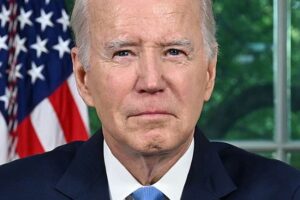In the early days of her campaign, Kamala Harris stepped into the spotlight as the Democratic presidential nominee after Joe Biden withdrew from the race. However, her close association with the Biden administration became a challenging obstacle. As vice president, Kamala Harris faced difficulties in separating her platform from the incumbent president’s record, especially when his popularity dwindled. With Biden’s approval rating lingering around 40% and economic concerns on the rise, Kamala Harris found it nearly impossible to distance herself from public dissatisfaction with the administration.
Although Kamala Harris launched her campaign with promises of a “new generation of leadership,” she struggled to establish a clear distinction from Biden’s policies. Her reluctance to break away from Biden’s legacy meant she was frequently seen as a mere continuation of his administration, limiting her appeal among voters yearning for change. This dynamic was particularly evident in her response to a question on ABC’s The View, where she admitted she wouldn’t have done anything differently than Biden. Her remark quickly turned into fodder for Republican attack ads, symbolizing her campaign’s challenge in convincing Americans of her capability to lead.
The Economic Disconnect: Kamala Harris’s Struggle to Address Voters’ Concerns
Despite a campaign that initially rallied around issues such as abortion rights and economic reform, Harris was unable to address voters’ economic anxieties effectively. As inflation persisted and the cost of living continued to rise, Americans grew increasingly concerned about their financial situations, with nearly three in ten voters indicating their families were “falling behind” financially, according to AP VoteCast. This rising economic insecurity became a significant liability for Harris, who was perceived as out of touch with working-class challenges.
Instead of offering concrete solutions to these financial strains, Kamala Harris’s campaign often skirted around pressing issues like housing affordability and immigration reform. Furthermore, her alignment with Biden’s economic record left many voters questioning her capacity to bring the necessary economic change. While she attempted to differentiate herself from the previous administration towards the end of her campaign, Kamala Harris’s approach felt inconsistent and failed to address the core frustrations of an economically strained electorate.
Struggles with Key Democratic Demographics
The Harris campaign aimed to galvanize the broad coalition that had contributed to Biden’s success in 2020, including African American, Latino, and younger voters. However, exit polls revealed significant underperformance with these core groups. Harris saw a 13-point decline among Latino voters, a two-point drop among Black voters, and a six-point decrease among young voters under 30. This erosion of support from critical demographics suggested a waning enthusiasm for Democratic leadership and a shift in priorities among these groups.
Prominent Democrats, including Senator Bernie Sanders, pointed to these trends as indicative of a deeper party issue, as working-class voters began to drift away from the Democratic base. Although Harris’s historic candidacy garnered notable support among women, her campaign struggled to convert this momentum into decisive victories within other voter segments. Her inability to bridge the gap with suburban Republican women also highlighted her difficulty in attracting a broader coalition, despite the high stakes of the post-Roe v. Wade political landscape.
Campaigning Against Trump: A Misguided Strategy
Rather than crafting a compelling vision for her presidency, Harris dedicated significant portions of her campaign to criticizing her opponent, Donald Trump. Initially, she presented a positive, future-focused campaign centered on personal freedoms and middle-class prosperity. However, as Election Day approached, Harris increasingly leaned into her attacks on Trump, describing him as “unhinged and unstable,” while characterizing his rhetoric as a threat to democratic values. This shift in tone, while impactful, left her own policy positions underdeveloped and her vision for the nation unclear to voters.
Veteran pollster Frank Luntz noted that Harris’s relentless focus on Trump backfired by depriving voters of insights into her potential leadership. Many Americans, already familiar with Trump’s polarizing reputation, felt that Harris’s campaign neglected to address her own plans and priorities for her first term. This strategy ultimately failed to forge the necessary coalition of voters, leading to a decisive defeat and sparking introspection within the Democratic Party. Harris’s loss underscored a growing perception among the electorate that Democrats may need to redefine their message and approach if they hope to recapture the White House in future elections.














